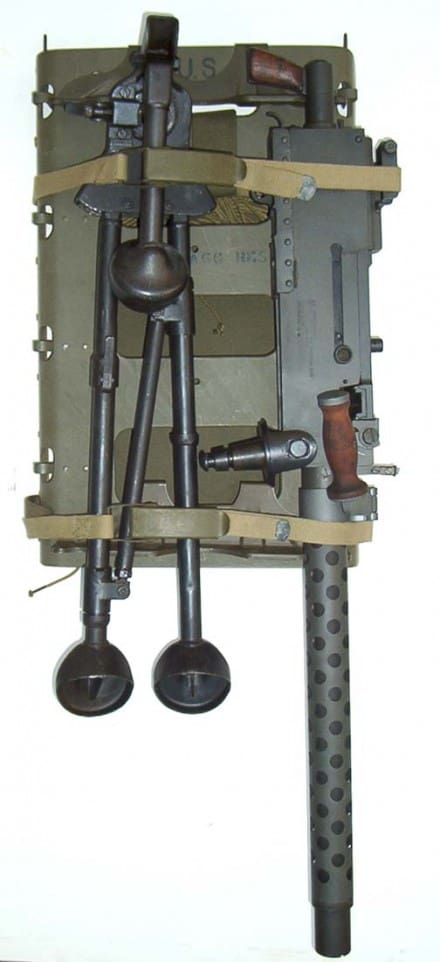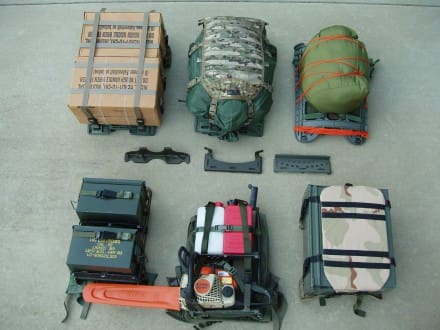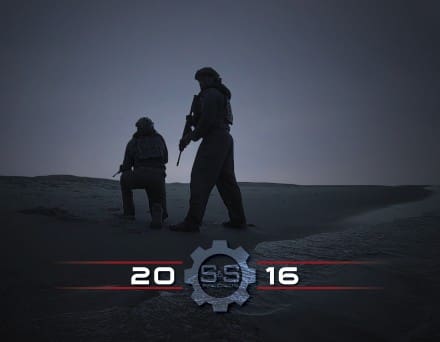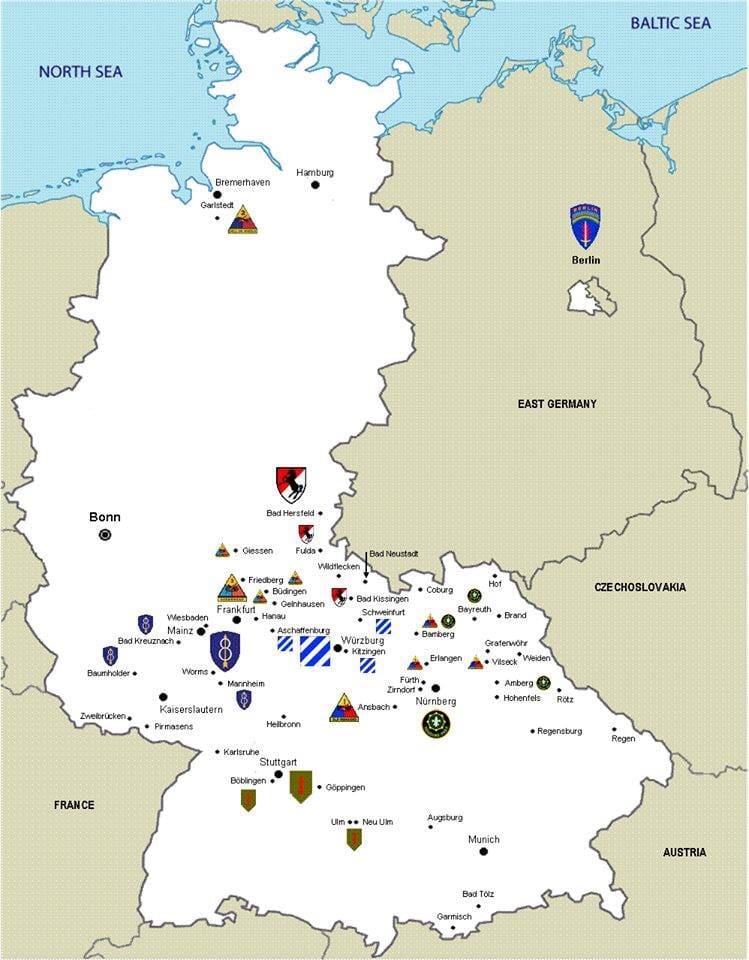Packboards, aka packframes, are an ancient load carrying concept. The Roman Legions utilized a clever variation on the basic idea for centuries. The Legionaries were issued a wooden T-shaped “carrying pole” which they rested on the top of the rectangular plywood and leather shield tied to their backs to carry individual and cohort equipment. By not attaching the gear directly to the shield they protected that critical piece of kit from non-battle damage. And it also allowed them to put the shield into action more quickly when necessary. In this country, Fur Traders, Mountain Men and Prospectors used versions of packboards in the earliest days of our Nation. Usually these were homemade of roughhewn wood in either rectangular or A-Frame shapes. Leather held them together and common cordage secured any load. Local versions of these simple but effective loadbearing implements can still be found in daily use in many parts of the world.
However, even before our country gained independence and through most of the 19th Century packframes were out of favor in most western militaries. It was an era where brightly colored Armies generally moved along roads and fought in set piece battles. Therefore, pack animals and wagons could and did carry much of the bulk sustainment load for an army. At least until the American Civil War and the wide spread introduction of rifled individual weapons. During WW II the US military had two packboards that saw service. The “Yukon Pack Board” which looked like a small window frame of 2”x2” pieces of lumber laced together with a canvas sheet and canvas shoulder straps. However, while it was sturdy it was also heavy at 7 pounds empty and was not popular or in service long. The other was the more prevalent and familiar curved sided plywood and canvas “Packboard, Plywood” which was a mere 4 pounds (see photo). By the end of WW II the plywood version had become the standard and remained so for the next 30 years.
Packboards were unit items and not individual issue. In some cases they were used to carry the barely man-portable radios of the day for artillery forward observers. Combat medical platoons used them to carry supplies necessary to establish aid stations close to the front. Communications soldiers would carry and rapidly deploy spools of telephone line to link front line positions. Engineers would carry demolition supplies and pioneer tools to support their mission. But in WW II the packboards were most widely used by units habitually operating in mountainous terrain where motor transport couldn’t easily move. The mountains of Italy for example where the 10th Mountain Division and the First Special Service Force (FSSF) used packboards extensively to sustain and support themselves in combat.
To be clear, Packboards were never meant to be used tactically in the same way as a rucksack. They were best employed on a fairly linear battlefield with front lines and relatively safer rear areas. You didn’t look for a fight if you had a packboard on your back. It was indeed common practice for soldiers to also strap their individual weapons on to the boards in the mountains so that they would have both hands free to pull themselves up and down the slopes. Packboards were commonly employed to bring up heavier weapons and ammunition resupply after an objective had been secured. Later a detail might go back toward the rear to bring up a few Mermites with hot rations or other sustainment gear from a vehicle drop off point.
Although it is a rule that is consistently violated, the Army has always recommended aggressive load management and the acceptance of risk to keep the fighting load as light as possible. But not when using packboards. In fact, the Army recommended that the individual load should be as heavy as the soldier could carry when a unit utilized packboards. The reason is simple and sound. If you were going to dedicate combat power to the effort it makes sense to get as much as possible moved to the line in as few trips as can be supported. Then those soldiers can more quickly return to their primary duties. A few years later Korea turned out to be precisely the kind of war that packboards were designed for. The fight was largely conventional. The battle lines moved back and forth from rugged ridgeline to ridgeline. The road network was minimal and fixed wing resupply was still restricted to large and relatively flat and open drop zones. And helicopters were not yet available in significant numbers. So the American soldiers in Korea along with their Allies had to hump all of their supplies from the valleys to the ridgetops day in and day out. The modest packboard was a critical piece of gear in those days.
Packboards didn’t get as much use in the Pacific as they had in Europe in WW II. In part that was because the thin plywood didn’t last long in high humidity tropical environments. The same was true in the jungles of Vietnam. But there were other reasons that packboard use declined during that war. The nonlinear guerrilla nature of the conflict and the fact that units routinely operated from fixed firebases made Korean War style packboard sustainment unnecessary and less tactically sound. The Firebases provided pre-established logistical and fire support without the need for the troops to carry the additional heavy weapons and materiel. Pinpoint helicopter resupply also meant that emergency supplies could be delivered directly to where they were needed to troops operating in the field. The widespread issue of rucksacks to troops in the theater took care of the remaining load carriage requirements. All of which allowed units to satellite out from bases with a relatively lighter combat load.
I had some experience with USGI plywood packboards like the one in the picture during the time I was a Pathfinder in Germany, 1976-78. As I recall we had six of them (2 per 4-man Team). They were used to carry the radios, marker panels, lights and other items necessary to set up and control helicopter landing zones and occasionally a drop zone. Our packboards would weigh in at probably 75-80lbs for a three day peacetime mission. Even back then batteries made up most of that weight. The packboards actually weren’t that uncomfortable to wear. And since we could take turns carrying them the system worked pretty well. The packboards had a good strength to load ratio, but were susceptible to damage if rough handled. The corners on all of ours were chipped and repaired with 100 mile an hour tape. A poorly executed “rucksack flop” could and often did break them. So taking them off was best done with a buddy’s assistance.
There were three basic and essential accessories that were supplied and utilized as part of the packboard system. Issue cordage, which in non-Airborne Units was usually the same small diameter hemp rope used for shelter halves. 550 Cord was not an item that was authorized for most Army units in those days (or readily available for individual purchase as it is now). But in Airborne Units, at least by the 1970s, 550 Cord was typically used because it was stronger and held up better to moisture and hard use. I remember we had to go down to the 7th Corps Rigger Company (there were no Riggers at Division level in Germany) to wheedle them out of a spool every now and then. Although we probably used it more for boot laces and other extraneous purposes than we ever did for the packboards. If issue cordage wasn’t available, then any rope that you had could do in a pinch. The packboard had 4 hooks on each side to facilitate lacing a load to the frame.
The second accessory was the Strap, Quick Release. The closed loop cotton webbing strap was approximately 50 inches long with a simple buckle and clamp attaching mechanism. The straps were issued three to a packboard and were intended to be used in conjunction with the third common accessory, the Packboard Attachment. Nowadays almost always referred to as a Cargo Shelf. The attachment(s) or shelf actually supported the weight of the load while the strap stabilized the load by cinching it tight to the packboard. The aluminum shelves were also issued three to each Packboard. In my admittedly limited experience, all the straps, cordage and the attachments were habitually carried with the packboard to allow for quick reconfiguration if you were backhauling something different than what you hauled up the first time. My research tells me this was the typical SOP for units using the boards routinely for sustainment.
Although not a standard item when the Plywood Packboard was in active service, there is another packframe accessory that is now used extensively by hunters in the U.S. that is certainly worth mentioning That is the nylon fabric / webbing “beavertail” attachment. Beavertails like Mystery Ranch’s “Load Sling” or the Kifaru “Cargo Panel” are tailored to fit those manufacturers’ proprietary packframes. But, because of their modular nature they can also be readily adapted to other frames. The Gregory SPEAR detachable Compression Panel is the only beavertail that the U.S. Military has issued with a full sized rucksack to date. (And as I have mentioned before, I am not in favor of these panels in that application since they are additive to a rucksack that is already carrying a full internal load.) The beavertail basically does what the separate straps or cordage did, i.e. cinch the load tight to the packframe effectively. A Beavertail attachment can also serve to reduce but not eliminate the need for a separate cargo support shelf.
I have a few examples of packframes and accessories on display in the group photo for demonstration purposes. Bottom left are two ALICE frames configured with two of the ALICE shelves each. One with two ammo cans and one with a “mission load” for my amateur lumberjack activities. Top left are two longer Canadian Military packframes I mated with U.S. MOLLE surplus suspensions. I’m referring to these as “Black Devil Packframes” in honor of the FSSF and the fact that these are also a U.S. / Canadian hybrid. One with cases of MREs secured with straps. The other has a soft load in a waterproof bag enclosed by the Kifaru Cargo Panel. Bottom right is a DEI 1606 frame with the smaller Gregory Compression Panel and a 40 mm can. Top right I also have a DEI 1603 frame set up in a manner similar to how the old school packboard would have been rigged with a cordage load. I have used orange 550 for better visibility. The 1603 is almost dimensionally identical to the Plywood Packboard including the curved sides. I short loaded the frame so that I could also illustrate how the cordage was usually carried wrapped around the top of the packboard when not in use. In the middle, from left to right, is the original issue Packboard Attachment. In the center is the cargo shelf that was developed for the tubular framed Lightweight Rucksack used in Vietnam. It seems to have been used mostly to carry radios rather than general supplies in country. And on the right is the even more effective ALICE Cargo Support Shelf. Note: all three of these shelves will work with the ALICE packframe.
In the course of putting this article together I have been reminded that the old plywood packboard system served a specific tactical purpose that is quite different from a general issue rucksack. That is why the ALICE system included straps and shelves to fill the packboard / packframe requirement. Unfortunately, for a number of reasons, ALICE as issued performs poorly in that role. First the good news. The ALICE shelf is outstanding. Lightweight yet strong with multiple strap and cord lashing options. And it is simple to attach and detach yet is secure when mounted to the ALICE frame. The straps that come with ALICE are something of an improvement over the straps that came with the plywood packboards in that they are nylon instead of cotton webbing. But the buckle is finicky to put on and take off and is difficult to get secured tight enough on hard items. But the frame itself is the biggest shortcoming. Surface area matters when you are tasked to carry outsized and odd shaped loads. Because of its tubular and open nature and smaller overall size the ALICE frame doesn’t provide much area to work with. The smooth tubes don’t have any hooks, cleats or much in the way of built in attachment points to hold straps or cordage in place on the frame itself. Which is vital to stabilizing the load. The result is that the load gets shaken loose very easily if you use the issue straps alone. The result is that most people who ever used ALICE as a packframe lost confidence in their equipment and the concept itself. The DEI 1603 frame on the other hand has everything that ALICE doesn’t and would make an excellent packboard (the Canadian frame is even better IMO). Yet the MOLLE system only comes with Lashing Straps.
A number of manufacturers including DEI do make PALs panels or sleeves for their packframes, and even for the venerable ALICE frame. Intended primarily to support carrying breaching / rescue kit tools or “assault loads” of some kind and not for traditional packboard duties. None that I have seen even come with accessory cargo shelves. In fact, there is no modern cargo shelf available for the common modular packframes most widely used by the U.S. Military and available as surplus to civilians. The DEI 1603 and 1606 packframes. As I mentioned earlier, the shelf is actually meant to support the weight of the load rather than the tiedown device. It also serves to “lock” the load onto the packframe and prevent drooping or sagging. The cargo shelf should not be considered an optional item when carrying heavy and hard edged objects like weapon systems and metal ammo cans – or the newer technological items like robots and tactical drones.
Is a military packboard concept still relevant today? I’d say yes. There is still a lot of rugged terrain in this world we may have to someday seize and hold against determined and capable enemies. Whether we want to or not. I can certainly envision scenarios where U.S. and Allied forces could be required to face serious hybrid threats. A renewal of large scale hostilities on the Korean peninsula for example. That would likely be a semi-linear, quasi-conventional war of maneuver. Including robust enemy anti-air capabilities that would make direct aircraft resupply to the front lines too risky. In a fight like that, man packing bulk supplies and equipment may again become a necessity. Packframe systems including cargo shelves would be the right tool for that kind of job. At least commanders should have that option readily available in my professional opinion. With that in mind I contacted DEI just after Christmas and asked if they would be willing to prototype a polymer cargo shelf. Modeled after the excellent ALICE Cargo Support Shelf and designed to clip onto their packframes in the same fashion. To date I have not heard from them. I’ll keep trying. If DEI remains uninterested I will see if I can’t find someone else.
LTC Terry Baldwin, US Army (RET) served on active duty from 1975-2011 in various Infantry and Special Forces assignments.
Next: Cargo Pockets.




















































































































